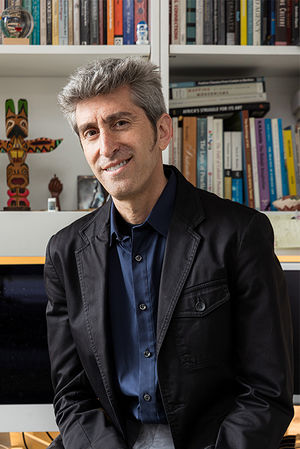
Photograph by Edward Dossetter, 1881
From a glass plate
Donated by Israel W. Powell in 1885
Image 42298, American Museum of Natural History Library
This photograph shows the Kwakwaka’wakw village of Newitti during a survey trip conducted by Israel Powell for the purpose of monitoring new Native reserves on the coast of British Columbia. The village had benefited from the early fur trade in the late eighteenth century. Despite a period of hostility with the local Hudson’s Bay Company around 1850, Newitti became a key destination for traders and museum collectors by the 1880s. Multiple signs of intercultural exchange are visible here: the Westernstyle clothes and trade blankets worn by the Natives; the British flag flying from the second house’s roof; and the English messages mounted above the doors amidst hereditary family crest motifs. Powell reported that the two rival chiefs, who took the names “Cheap” and “Boston,” were eager to maintain lucrative commercial relations. By using the language of the colonizing culture, their signs spoke directly to prospective customers while also displaying chiefly status and identity, much as the crests do. Like the Native incorporation of new materials and motifs in this period, such overt borrowing of the foreign may have communicated to both indigenous and settler communities.
Text of house-front signs:
Left: “CHEAP: Hes one of the head chief/ of al tribes in this country/ white man can get information”
Right: “BOSTON: He is the head chief of/ Naweeti He is true and/ honest He don’t give no/ trouble to no white man”










